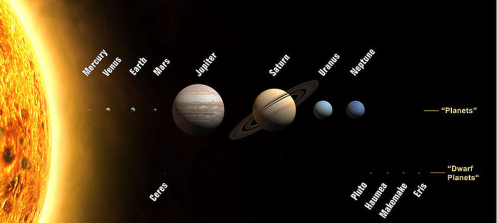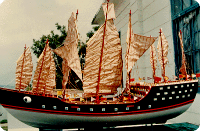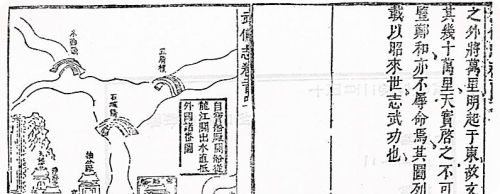The Michael Wood documentary, The Story of India, which was telecast in six parts on PBS mentioned something interesting in the very first episode. Wood talked about the Out of Africa theory – the migration of humans 70,000 years back, from Africa along the shores of Arabian Sea into South India – and mentioned that all non-Africans in the world are descendents of these Indians. Nothing new in that.
Going in search of clues left by those ancient migrants in South India, he arrived at the house of a Kerala brahmin who is teaching his son mantras the way it has been done for millenia. Wood then shows the 2006 athirathram – a 12 day vedic ceremony – and mentions that certain sounds recited in this ceremony takes years to learn but have no meaning. When brahmins were asked for meaning, they did not know. They simply knew that it was handed down.
Since man is a speaking animal, we have always assumed that any word man says is in language, but some of those mantras are not in any known language. Hence these sounds, which are still recited today, are considered to have evolved before human speech.
Of Birds and Humans
Frits Staal of UC Berkeley thought that the claim that mantras are older than language was “preposterous.” In 1975 he helped finance an athirathram, which had not been conducted since 1956 due to financial constraints. Analyzing the sounds he came to the conclusion that mantras could belong to a pre-language era since:
- Mantras are language independent: Anything in language can be translated whereas mantras remain the same in all languages.
- Mantras, even though they seem to be in a language like Sanskrit, are not used for their meaning.
- Mantras follow patterns, like refrain, which is not seen in language.
The clincher for the pre-language theory came when the sound patterns were analyzed to find the nearest equivalent in nature. The technique followed was like this: He took a mantra like Jaimintya Gramageyagana (45.2.1) which goes:
vo no ha bu / idam idam pura ha bu / pra va pra
vas ia ia ha yi / nina ninava tarn u vo ha bu / stiisa vi
sakhtaia Ya ha vi / dramutalyayi / o vi la /
It was split into patterns like AB / CB / DE/.. where A = vo no and B = ha bu. Comparing it to bird songs, it was found that the patterns were similar and such patterns were not found any where else.
As a side effect, by comparing the patterns of mantras and certain birds, it is possible to find which birds influenced the mantras. There is research which found patterns in the composition of Igor Stravinsky and a bird usually found in the region where he worked. Thus some of the mantra sounds were found to be inspired by the songs of Blyth’s Reed Warbler and Whitethroat – two birds which migrate to India.
There are examples of bird-human interaction in Vedas and Upanishads. Some vedic chools have been named after birds — like kausika after the owl or taittiriya after the partridge. D. D. Kosambi believed that Vedic clans were totemic. Then there is the story of Satyakama Jabala in Chandogya Upanishad who:
Critiques
Having established this similarity between bird song and mantra, the theory then takes off with a life of its own. There are vedic rituals for making rain and curing illness and similarly birds sing for building nests or attracting females; there are rituals and bird songs for various occasions. Then it was also found that bird sing – believe it or not – just for pleasure. So Staal extends the theory to say that, similar to skiing, dancing and music, mantras and rituals too are done for pleasure.
Between Staal’s athirathram in 1975 and Wood’s in 2006, one was held in 1990 near Thrissur which I attended for a day. This athirathram, which was extensively covered in Malayalam newspapers, was highly respectful and the words I heard were not “playful” or “pleasurable.” I can understand singing for pleasure, but am yet to meet a priest who said, “it’s a weekend and raining outside, let’s do a ganapati homam for pleasure.”
Prof. Staal thinks that not just the sounds, but rituals too are meaningless. But Wood writes that mantras, “work on emotions, the physiology, and the nervous system.” According to Wood, these rituals are a away of achieving heightened mental and physical state. So I am not sure if this research is of the Ganesha phallus quality. If you have seen any paper or book by anyone else, please leave a comment.
Postscript: Kosambi’s concept that Vedic clans were named after animals was criticized inThe Early Brahmanical System of Gotra and Pravara (Purusottama Pandita, John Brough). They wrote that it is equivalent to saying an Englishman with the surname Fox belongs to a totemic clan of that animal. Instead they suggest that the bird name could have come from the clan name.
Reference: Michael Wood has a companion book to the program. More details can be found in Staal’s paper, Mantras and Bird Songs, in which one quoted sentence reads: “there are mechanisms in existence which reinforce economical perfection in motor skills independently of the attainment of the ultimate biological goal in whose pursuit the learned movement is developed.” Staal’s book on this topic is available in limited preview mode in Google Books.
[serialposts]


 In his Tantra Sangraham, Nilakanta revised the Indian planetary model for the interior planets, Mercury and Venus and for this he formulated equations to find the center of the planets better than both Islamic and European traditions. He also described the planetary motion in which Mercury, Venus, Mars, Jupiter and Saturn moved in eccentric orbits around the Sun, which in turn went around the Earth. Till Nilakanta, the Indian planetary theory had different rules for calculating latitudes for interior and exterior planets. Nilakanta provided a unified rule. The heliocentric model of Copernicus did not alter the computational scheme for interior planets; it would have to wait till Kepler (who wrote horoscopes to supplement his income).
In his Tantra Sangraham, Nilakanta revised the Indian planetary model for the interior planets, Mercury and Venus and for this he formulated equations to find the center of the planets better than both Islamic and European traditions. He also described the planetary motion in which Mercury, Venus, Mars, Jupiter and Saturn moved in eccentric orbits around the Sun, which in turn went around the Earth. Till Nilakanta, the Indian planetary theory had different rules for calculating latitudes for interior and exterior planets. Nilakanta provided a unified rule. The heliocentric model of Copernicus did not alter the computational scheme for interior planets; it would have to wait till Kepler (who wrote horoscopes to supplement his income). Instead of following such examples and popularizing the work of Indian mathematicians, we have been behaving like Confucians at the court of the 15th century Ming emperor Zhu Di who erased evidence of the large fleets that sailed as far as the Swahili coast. While the world knows about the accomplishments of Europeans like Vasco da Gama, Columbus, Magellan and Francis Drake, little is known about
Instead of following such examples and popularizing the work of Indian mathematicians, we have been behaving like Confucians at the court of the 15th century Ming emperor Zhu Di who erased evidence of the large fleets that sailed as far as the Swahili coast. While the world knows about the accomplishments of Europeans like Vasco da Gama, Columbus, Magellan and Francis Drake, little is known about 